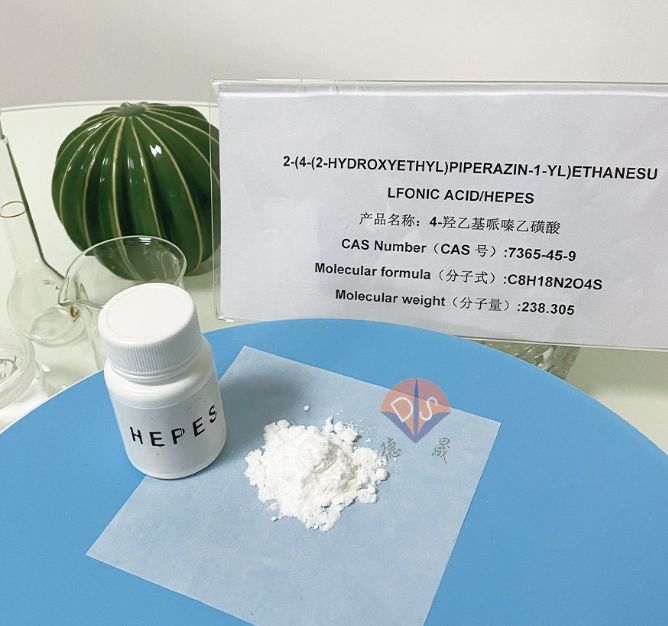How HEPES can assist zebrafish embryo development: The mysterious power in Danieau culture medium
Release time:
2025-05-26
HEPES, as an important biological buffer, plays an indispensable role in numerous experimental scenarios. Especially in the field of zebrafish embryo development research, the application of HEPES not only helps scientists solve many technical problems, but also provides a new perspective for exploring early life development processes. Next, let's learn about the use of HEPES in Danieau medium and its impact on zebrafish embryo development.

HEPES buffer
From Fundamentals to Frontiers: The Multi faceted Role of HEPES
HEPES (4-hydroxyethylpiperazine ethanesulfonic acid) is a zwitterionic organic chemical buffer that has received praise for its excellent buffering capacity, low toxicity, and compatibility with various biological systems. It has its presence in various fields such as cell culture, protein crystallization, enzyme reactions, etc. However, as research deepens, it has been discovered that the potential applications of HEPES in specific biological contexts far exceed expectations. For example, in zebrafish embryo development research, HEPES is used as an important component of Danieau culture medium to regulate the pH value of the culture environment and ensure that embryos can grow and develop under suitable conditions.
Preventing melanin formation: the outstanding contribution of HEPES
As a model organism, zebrafish's transparent embryos and rapid development cycle make it an ideal choice for studying vertebrate embryonic development. However, after the formation of the gut embryo, zebrafish embryos begin to exhibit melanin deposition, which not only affects the observation effect but may also interfere with the accuracy of certain experimental results. To address this issue, researchers have tried various methods and ultimately found that adding HEPES to Danieau medium can effectively prevent the formation of melanin.
Specifically, HEPES creates a microenvironment that is unfavorable for melanocyte differentiation by maintaining a stable pH value. This mechanism of action not only helps to improve the clarity and reliability of experimental data, but also provides the possibility for more detailed observation of internal structural changes in embryos. In addition, due to its low toxicity and good biocompatibility, HEPES will not have adverse effects on the development of the embryo itself.
Promoting Scientific Progress: HEPES Helps Future Research
In addition to its application in preventing melanin formation, the importance of HEPES in zebrafish embryonic development research is also evident in many other fields. For example, it can help researchers more accurately evaluate gene expression patterns, track cell fate decisions, and explore the impact of various external factors on embryonic development.

Product packaging
HEPES buffer, as a part of Danieau's culture medium, has demonstrated high value in zebrafish embryo research. It not only helps overcome the difficulties in traditional experimental methods, but also opens up new paths for scientific research. Looking ahead, with the continuous development of science and technology, we have reason to believe that HEPES will showcase its charm in more unknown fields. Desheng New Materials focuses on producing higher performance biological buffer products, aiming to provide researchers with more reliable choices.
News
Contact details
Contact number
Address: C8, Guanggu United Science and Technology City, Ezhou City, Hubei Province
Fax:0711-3704 589
Follow us



